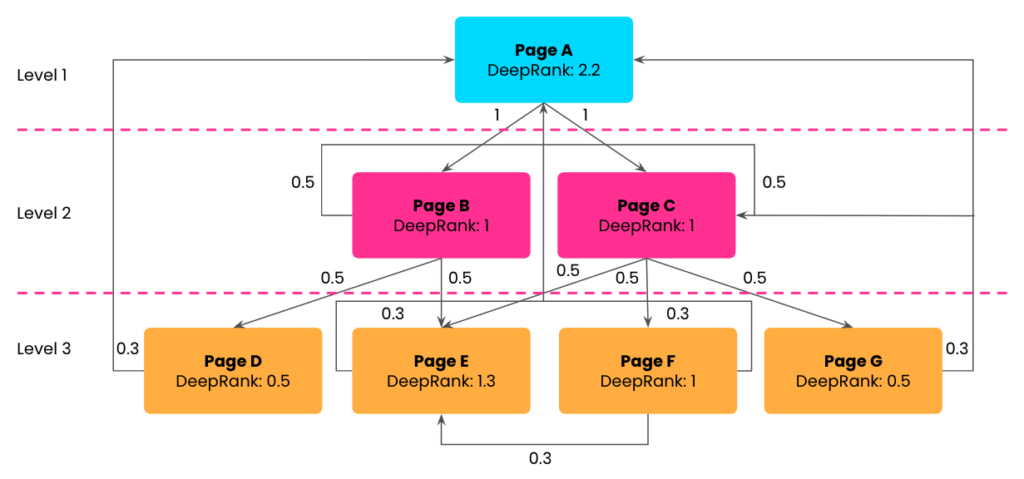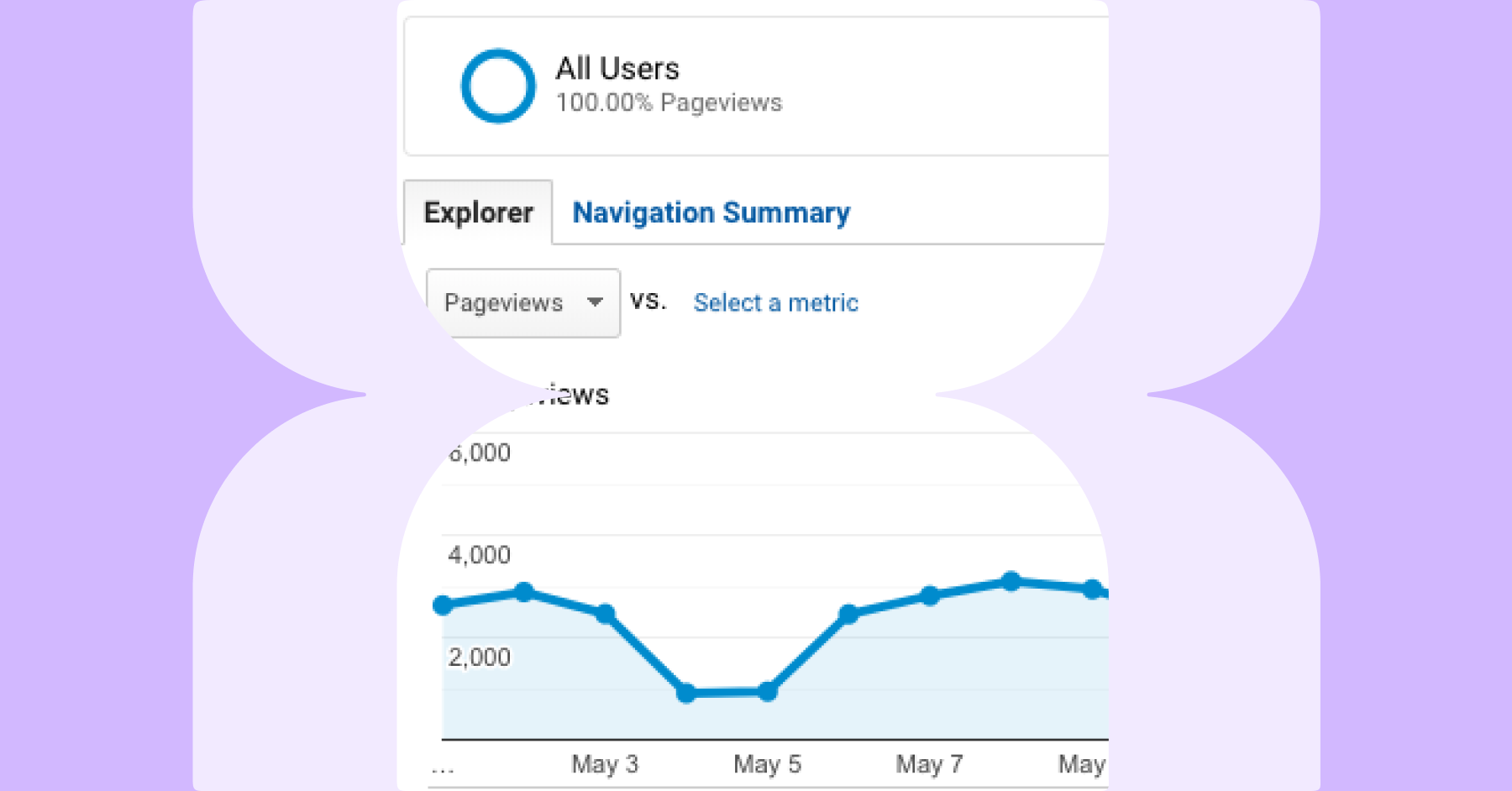Lumar has a unique metric which can help SEOs and website owners understand how important a page is based on the number of internal links pointing to it. This metric is called DeepRank.
In this guide we will discuss what DeepRank is, how it’s calculated and answer frequently asked technical questions about the metric.
What is DeepRank?
DeepRank is a measurement of internal link weight calculated in a similar way to Google’s basic PageRank algorithm. DeepRank is calculated during our transformation process and once calculated is stored as a metric in the API.
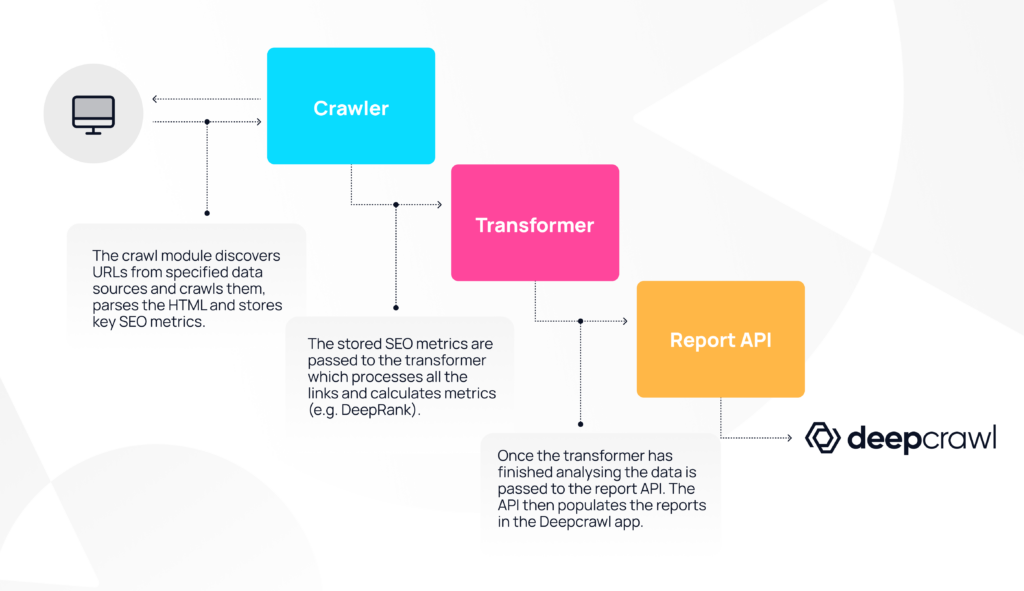
Along with all other relevant metrics, DeepRank is populated in the Lumar platform by the reporting API. The DeepRank score for each crawled page found by Lumar can be found in a column in each report.

DeepRank column in the report table view

DeepRank column in the report grid view
Why use DeepRank?
DeepRank is a metric which can be used to quickly understand how important a page is in the websites architecture. The DeepRank metric can be used to:
- Identify the most linked to indexable pages on the website.
- Quickly highlight if non-indexable pages are linked to on the website.
- Understand if the primary URL is the correct page in a set of duplicates.
- Analyse and identify SEO trends in your website architecture.
How is DeepRank calculated?
DeepRank is a page level metric which is calculated based on:
- The number of internal links pointing to a page.
- The level that the internal links were found.
For example, 100 internal anchor links pointing to page A from pages on level 1 will be given more “weight” than 100 internal links pointing to page A from pages on level 3.
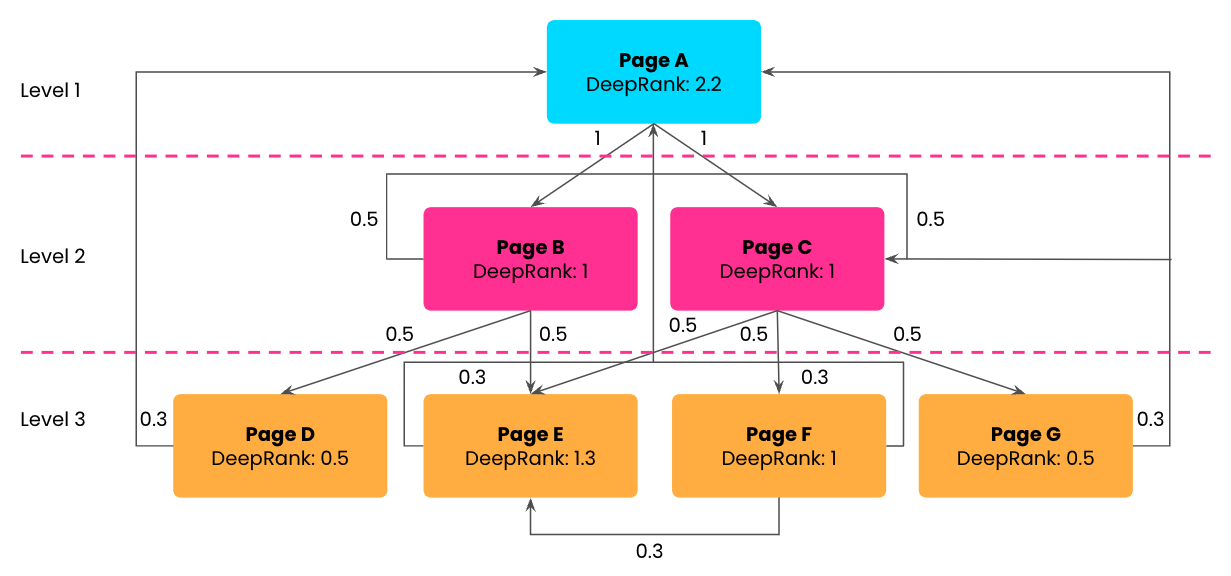
Although the level of the link is taken into account, the number of links pointing to the page is the best way to increase your DeepRank score.
Once the DeepRank score is calculated for each page, the scores are normalised to scale between 0 – 10.
A score of 10 means that the page has a large number of internal links found on pages high up in the website architecture. A score of 0 means that the page has almost no internal link instances found in the crawl or is poorly linked from pages lower down in the website architecture.
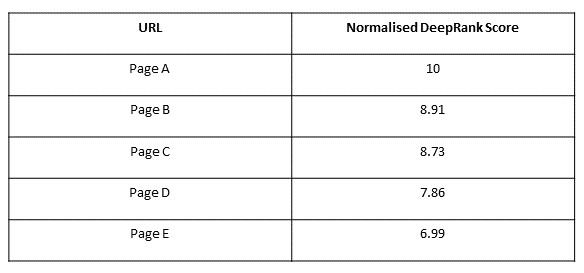
The normalised DeepRank metrics are passed to the reporting API, which then populates the data within the Lumar platform.
How is DeepRank used in Lumar?
The DeepRank score is used in multiple ways in the Lumar app.
Sort reports in Lumar
DeepRank scores are used to sort pages in reports from the largest to smallest. This helps users quickly see the most important pages based on the internal link count of their website.

Select primary URL from a set of duplicate pages
A page with the highest DeepRank score is selected as the primary page from a set of duplicate pages (e.g. pages with duplicate content, pages with duplicate title tags, etc.).

Primary URL in the report table view

Primary URL in the report grid view
Primary source URL
The URL with the highest DeepRank score where a target URL was found in the crawl is selected as the primary source URL.

Primary Source URL in the report table view

Primary Source URL in the report grid view
Frequently Asked Questions
Do external links count towards the DeepRank score?
No. The DeepRank algorithm only takes into account internal links. An internal link by default is any anchor link found on pages on the primary domain specified in the Lumar project settings in step 1.
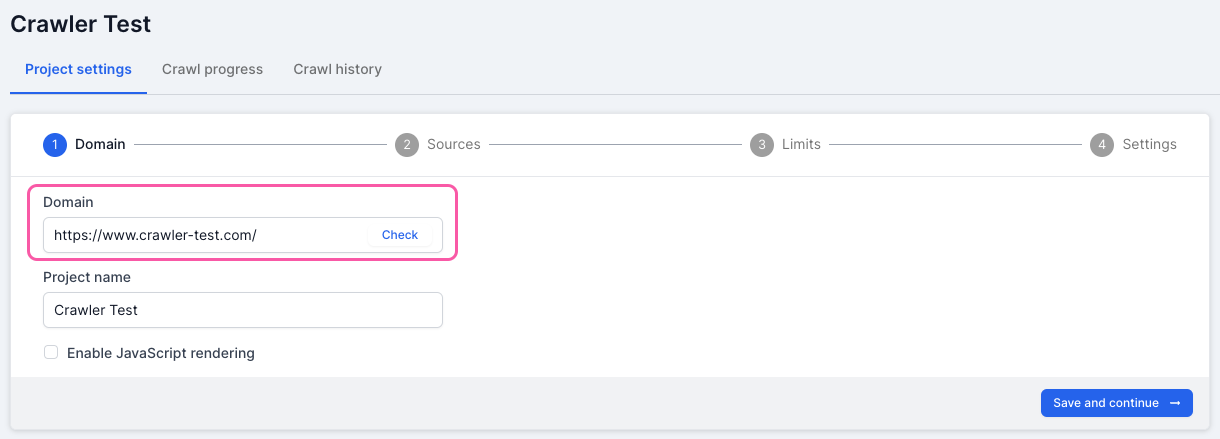
Links from other pages will also be counted as internal if additional domains are added to the secondary domain setting or the crawl subdomains option is ticked in the advanced settings in step 4 of the project settings.
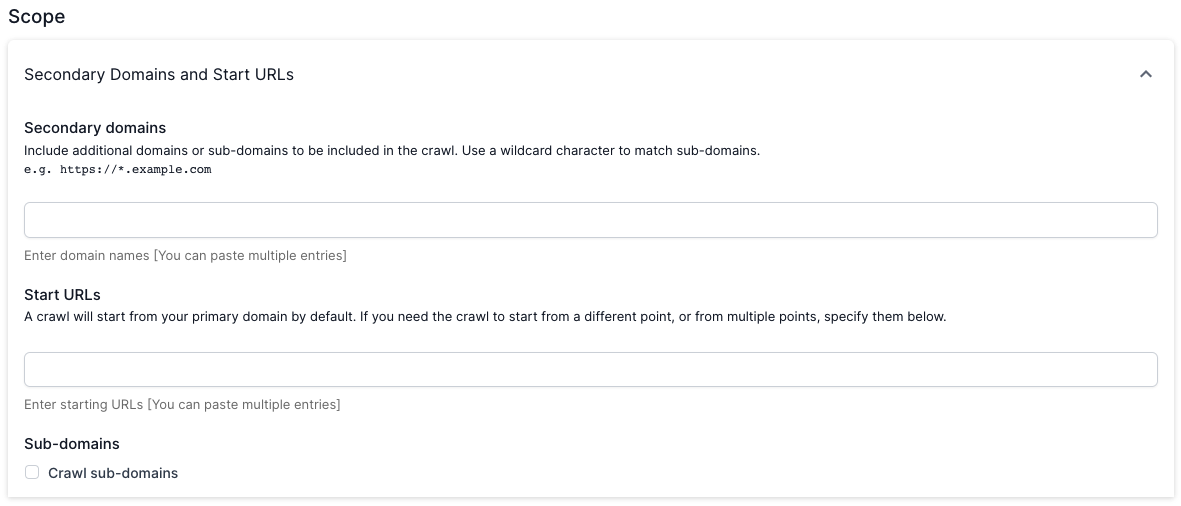
What page types are used when calculating DeepRank?
Only internal anchor links from HTML pages are used to calculate DeepRank. A DeepRank score is not calculated for images, JavaScript or CSS files which are found in the crawl.
Do internal links on uncrawled URLs count towards the DeepRank score?
No. Lumar only uses internal anchor links found on crawled HTML URLs.
How can I view the number of internal links pointing to a page?
Lumar fetches and stores each internal link the source URL where the link was found. At the moment we do not allow users to download all the internal link data and source URLs from the platform. Instead we provide the internal link instance metric. This metric shows the total number of internal links pointing to a page.
The number of link instances can be found in the Unique Internal Links report in Lumar.

Instance Count in the Unique Internal Links report table view

Instance Count in the Unique Internal Links report grid view
Does DeepRank take into account nofollow links?
No. DeepRank does not use any anchor links which have a nofollow attribute.
How can I improve my DeepRank score for important pages?
The best way to improve your DeepRank score is to make sure your important pages are well linked in the website’s architecture. For more information and guidance our team recommends reading the following articles:
- An SEO’s Guide to Site Architecture by Richard Baxter.
- Lumar Ultimate Guide to Site Architecture Optimization by Rachel Costello.
- 15 Site Architecture Tips for Performance SEO: Master Guide by Cyrus Shepard.
- Internal Link Optimization with TIPR by Kevin Indig.
Are sitemap links used in DeepRank?
No. DeepRank does not consider any links pointing to pages from Sitemaps.
Does DeepRank use backlink data?
No. DeepRank only uses the sum of internal anchor link counts and the level of links in its calculation. It currently does not use the count of inbound links pointing to a page.
How is DeepRank calculated for separate mobile sites?
Lumar does not distinguish mobile alternate URLs from desktop pages when calculating DeepRank. It is based on the raw internal link count to a page and so the DeepRank scores for mobile and desktop pages are calculated like any other page with an internal link found in a web crawl.
For example, if a separate mobile alternate and desktop website are crawled using the Mobile Site feature, the separate mobile link architecture will create a DeepRank score based on the sum of internal link counts and level weight found on the mobile pages, if those pages only internally link to one another. The desktop page’s DeepRank is based on the internal link counts and level weight found on the desktop pages, again if they only internally link to other desktop pages.
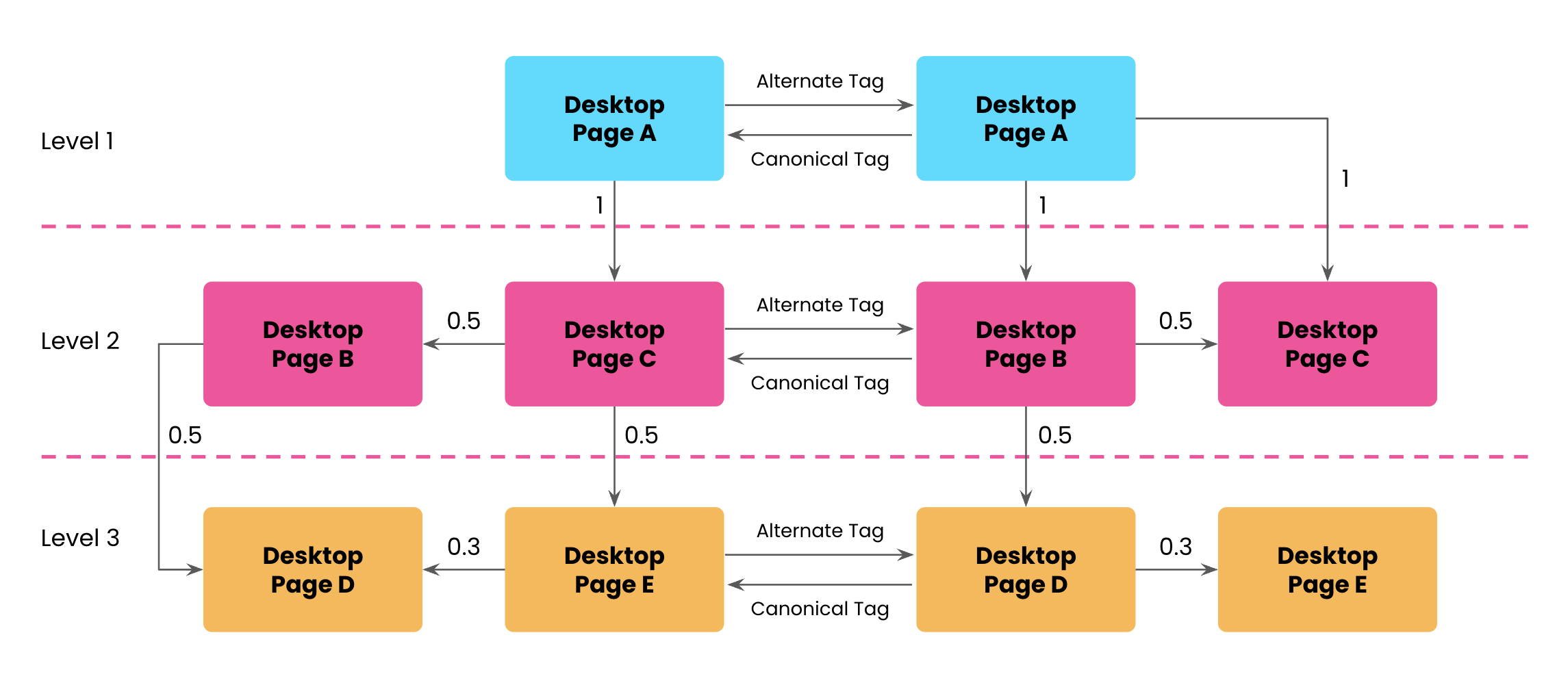
If there are internal anchor links on mobile pages to desktop pages, or vice versa, then these will also be counted in the DeepRank score for those pages.
Do internal links on duplicate content count towards the DeepRank score?
Yes, for the moment DeepRank uses all counts of internal anchor links across all crawled pages to calculate DeepRank.
Is the DeepRank score a domain wide metric?
The DeepRank score is a page level metric. It is not a score for an entire domain and does not show the “Domain Authority” of the website.
Any further questions on DeepRank?
If you have any further questions about DeepRank don’t hesitate to get in touch.
